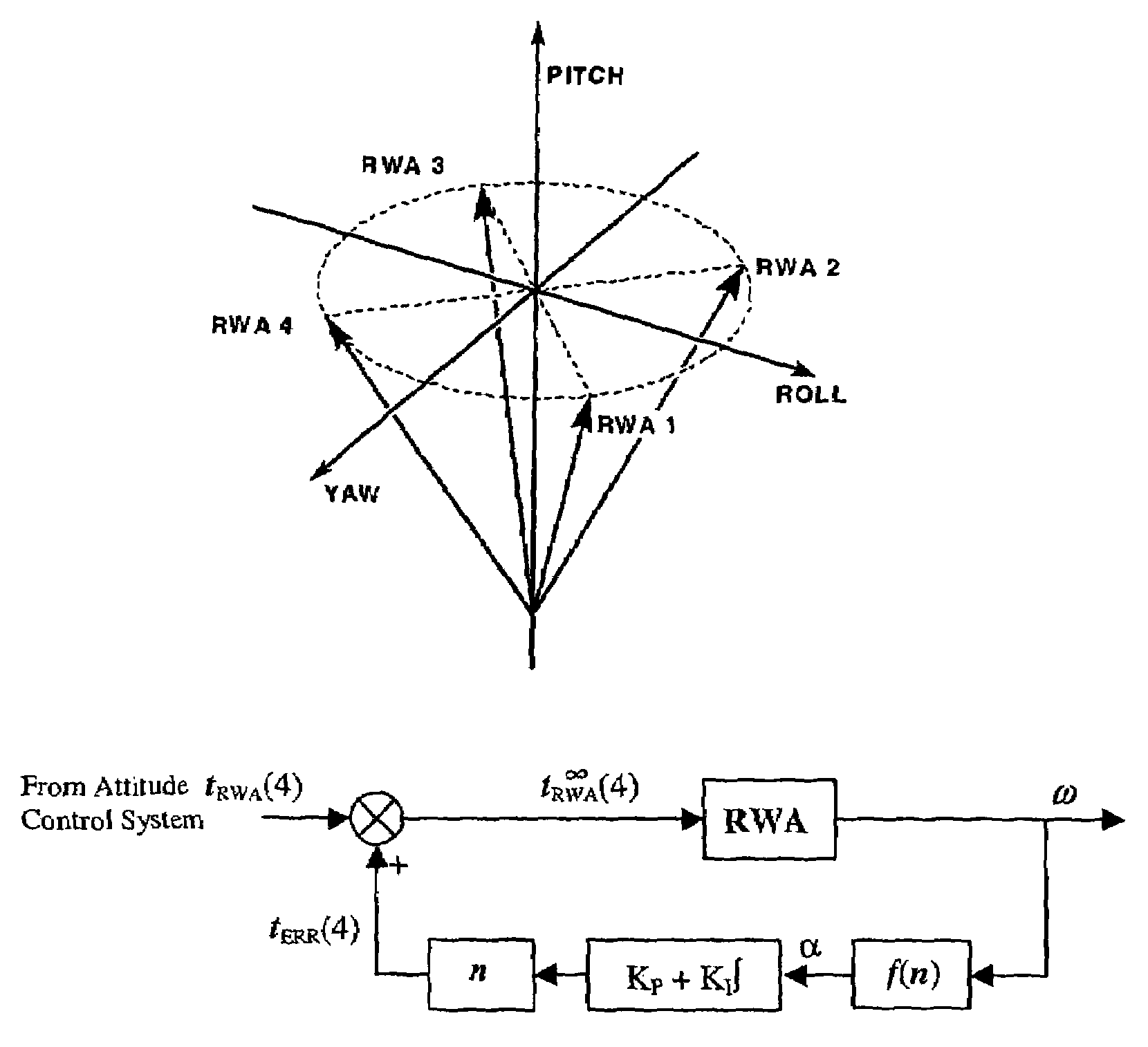Optimal speed management for reaction wheel control system and method
a technology of reaction wheel and control system, applied in the field of spacecraft attitude control, can solve the problems of limiting the service life of the spacecraft, undetectable dependence, and small available torque, so as to minimize the need for momentum dumping, minimize the infinity norm of the wheel speed vector, and minimize the maximum speed of rotation of all the reaction wheels
- Summary
- Abstract
- Description
- Claims
- Application Information
AI Technical Summary
Benefits of technology
Problems solved by technology
Method used
Image
Examples
Embodiment Construction
[0022]The 2-norm and infinity-norm of a n-dimensional vector v=[v1 v2 . . . vn]T are defined respectively as
[0023]v2=∑invi2=vTv(1)v∞=max{vi:i=1,2,…,n}(2)
[0024]In the remainder of the disclosure, a four-wheel configuration is assumed for simplicity in the description of the invention. It is straight forward to extend the disclosure herein to apply to systems containing a greater number of wheels. FIG. 1 shows a typical orientation of 4 wheels with respect to the spacecraft body frame.
[0025]Based on the mount orientation, the RWAs to the spacecraft body transformation can be formed as
T=[r1 r2 r3 r4] (3)
where ri is the ith wheel spin unit vector (direction of the wheel spin) expressed in the spacecraft body frame. The relationship between individual wheel momentum vector vRWA and the net momentum vector vsc in the spacecraft body frame is given by
vSC=TvRWA (4)
[0026]Since T is a full row-rank 3×4 matrix, there exists infinity number of ways vRWA can be calculated corresponding to ...
PUM
 Login to View More
Login to View More Abstract
Description
Claims
Application Information
 Login to View More
Login to View More - R&D
- Intellectual Property
- Life Sciences
- Materials
- Tech Scout
- Unparalleled Data Quality
- Higher Quality Content
- 60% Fewer Hallucinations
Browse by: Latest US Patents, China's latest patents, Technical Efficacy Thesaurus, Application Domain, Technology Topic, Popular Technical Reports.
© 2025 PatSnap. All rights reserved.Legal|Privacy policy|Modern Slavery Act Transparency Statement|Sitemap|About US| Contact US: help@patsnap.com



